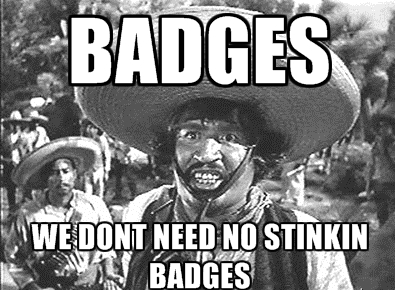 Sacramento, CA – February 24, 2014 – With little fanfare, the California Bureau of Security and Investigative Services (BSIS) under the Department of Department of Consumer Affairs (DCA) has made several revisions to the California Collateral Recovery Act (Business and Professions Code 7500-7511) that as of January 1, 2014, among other changes, allows Repossessors in the state of California to wear badges similar to that of law enforcement.
Sacramento, CA – February 24, 2014 – With little fanfare, the California Bureau of Security and Investigative Services (BSIS) under the Department of Department of Consumer Affairs (DCA) has made several revisions to the California Collateral Recovery Act (Business and Professions Code 7500-7511) that as of January 1, 2014, among other changes, allows Repossessors in the state of California to wear badges similar to that of law enforcement.
Revisions to this law were made in the belief that the identification of the repossessors would thwart or reduce acts of violence stemming from misidentification of repossessors as thieves or others who might fall victim to acts of violence by borrowers or others. While the act does allow for the wearing of badges, there are specific conditions of the badges appearance as well as methods of wearing them that must be adhered to.
CA Business and Professions code 7508.8. has been amended to read:
(a) Notwithstanding Section 7508.3, an oval, shield, round, square, or non-seven-point badge, cap insignia, or jacket patch may be worn by a licensee, officer, director, partner, manager, independent contractor, qualified certificate holder, qualified manager, or employee of a repossession agency. If a badge, cap
insignia, or jacket patch is worn, it shall bear on its face all of the following:
(1) All or a substantial part of the repossession agency’s name.
(2) The repossession agency license number issued by the director
to that individual or agency.
(3) The word “repossessor.”
(b) A repossessor shall not wear a badge on his or her belt or hang a badge around his or her neck.
(c) All badges, cap insignias, and jacket patches worn by a repossessor shall be a standard design approved by the director and shall be clearly visible.
(d) This section shall not apply to a holder of a temporary registration pursuant to Section 7506.9.
(e) The director may assess a fine of one hundred dollars ($100) for the first violation, one hundred seventy-five dollars ($175) for the second violation, and two hundred fifty dollars ($250) for each subsequent violation.
In the great state of insanity otherwise known as California, which I call home, this change in law appears rather contrary to the national trend that frowns on such activity, however, time will tell of the implications of this. Alas, “the path to Hell is paved with good intentions.”
In addition to this, clarification of when a repossession has occurred has been drafted into this law in section 7507.12. (a) With regard to collateral subject to registration
under the Vehicle Code, a repossession is complete if any of the
following occurs:
(1) The repossessor gains entry to the collateral.
(2) The collateral becomes connected to a tow truck or the repossessor’s tow vehicle, as those terms are defined in Section 615 of the Vehicle Code.
(3) The repossessor moves the entire collateral present.
(4) The repossessor gains control of the collateral.
(b) No person other than the legal owner may direct a repossessor to release a vehicle without legal authority to do so.
These definitions are a little fuzzy and questionable. For starters, what does “moves the entire collateral present” mean, and isn’t gaining entry to the collateral kind of a low bar to overcome? Does “No person other than the legal owner may direct a repossessor to release a vehicle without legal authority to do so” mean that it is illegal for anyone to drop a vehicle, be it a security guard, the borrower or maybe even law enforcement?
In a world already blurred with “color of law” issues, these revisions seem to be attempting to affect safety and better definition, but the true affect will be known when the first repossession agents with badges flashing gets cuffed and dragged before a judge for impersonating law enforcement and the first lender and agency get sued over similar allegations.
On the flip side, we’ll never know just exactly how many repossession agency employees lives and safety will be affected for the positive. Time will tell.











Hey! I wore a pony tail when I worked for Steve’s company. In 92’… 🙂
These are my opinions only and shouldn’t be taken as legal advice what so ever:
I felt the need to clarify that the DOJ and the BSIS don’t make revisions. These amendments went through legislature. The DOJ nor the BSIS publicly supports not opposed introduced legislature.
I’m not a supporter of the new law, but I’m also not opposed. Guess I’m neutral. Consumers escalating a situation are always quick to play dumb and advise law enforcement they weren’t aware their car was being repossessed usually following bad decision(s)… All the while a truck notoriously know as a repo wrecker is attached their (former) ride.. And the repossesor stressed I only told him a dozen times whom I was, my reason for being there, etc. When law enforcement is called out it’s presumed they would more easily identify the Repossessor.. Keeping an open mind I can see where there may be opportunity to minimally show credentials more clearly with the use of a badge, than again there will be those that abuse these changes and stamp a black eye on CALR’s efforts. Either way I support CALR’s efforts and if CALR members don’t like the new verbiage they can take that matter up with their legislative committee and have the language revised or retracted all together through majority voting.
As far as “(3) The repossessor moves the entire collateral” think scenarios other than vehicles, trucks, etc. What about a motorcycle, jet ski, trailer, ATV, etc.
Finally “(b) No person other than the legal owner may direct a repossessor to release a vehicle without legal authority to do so.” Isn’t being read correctly by the author here. A law enforcement officer acting within the scope of his employment certainly trumps a Repossessors right to self help repossession. Anyone that wants to misread these B&P codes and not follow the directive of a law enforcement officer shall suffer the consequences. What this code means in my interpretation is just as a law enforcement officer cannot force a debtor to surrender collateral, they may not force us (repossessors) to return it after we have repossessed. Security Guards have no authority to force you to drop a vehicle anyways so no reason commenting further on them.
Stay safe out there everyone.
….and for crying out loud Steve CALR hasn’t had a president with a ponytail in years! So you can start attending CALR conventions again and voice your opinions in person. 🙂
Worst piece of legislation ever introduced by CALR.